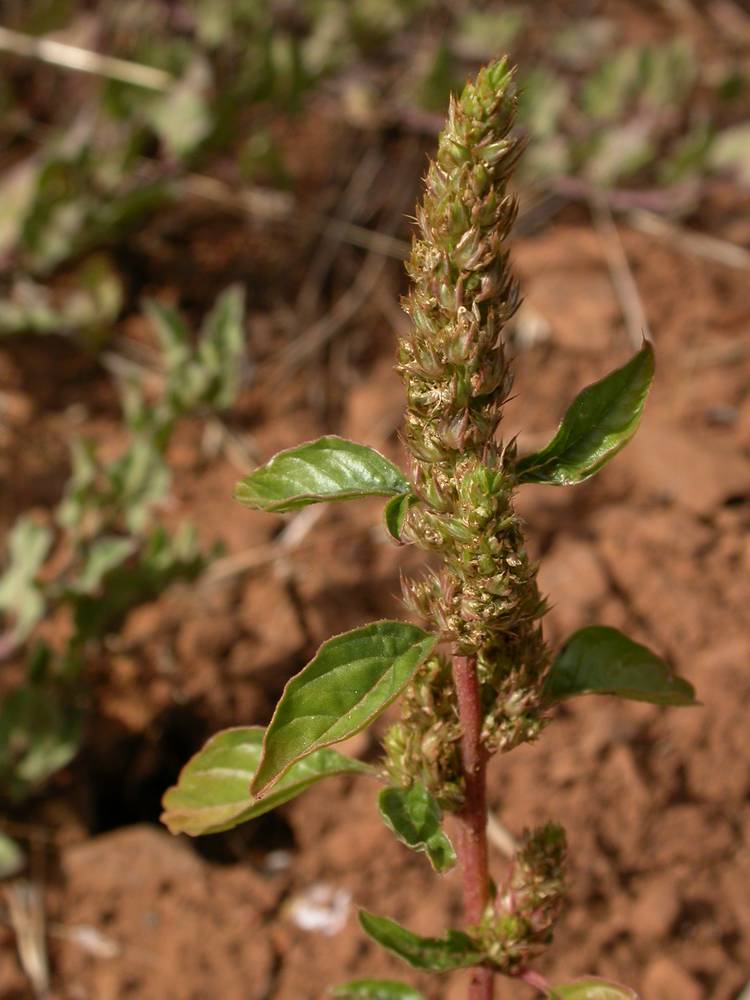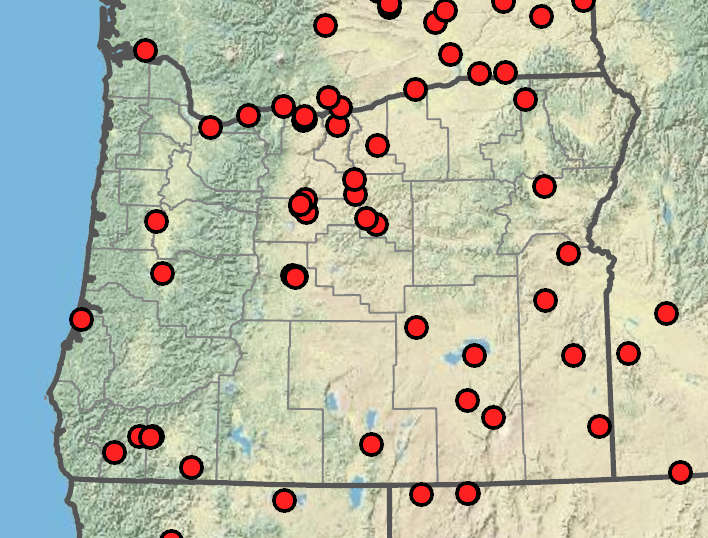Amaranthus muricatus
Amaranthus albus
tumbling pigweed, white pigweed
usually erect, sometimes nearly prostrate, spreading and branched, green to whitish.
blades obovate to narrowly spatulate, 1–8 cm, bases wedge-shaped;
margins flat to distinctly wavy-crisped;
midveins extending to a short weak spine;
tips rounded;
petioles 5–40 mm.
axillary clusters of flowers, green; greenish white, or yellow, staminate and pistillate flowers intermixed in clusters;
bracts rigid, oblong to lanceolate, 2–3(3.5) mm.
few;
perianth segments 3;
stamens 3.
perianth segments 3;
styles 3; erect.
ellipsoid-ovoid, 1.5 mm, rugose at bases.
lenticular, 0.6–1 mm; black; smooth; shiny.
=32.
Amaranthus muricatus
Amaranthus albus
Disturbed areas, fields. Flowering Jun–Oct. 0–1300 m. BR, BW, Casc, Col, Est, Lava, Owy, Sisk, WV. CA, ID, NV, WA; nearly worldwide. Exotic.
Amaranthus albus is a highly variable taxon depending on environmental conditions. It can be confused with A. blitoides when young and in moist areas where it is known to have a more procumbent habit.
Bridget Chipman
- Local floras:
BC,
CA,
OR,
WA
- Local Web sites:
CalFlora,
CalPhotos,
Flora NW,
PNW Herbaria
WildflowerSearch
iNaturalist (observations)
USDA Plants Database
- LBJ Wildflower Center
- SEINet
- Plants of the World Online
- Encyclopedia of Life
- Wikipedia
- Google Image Search



